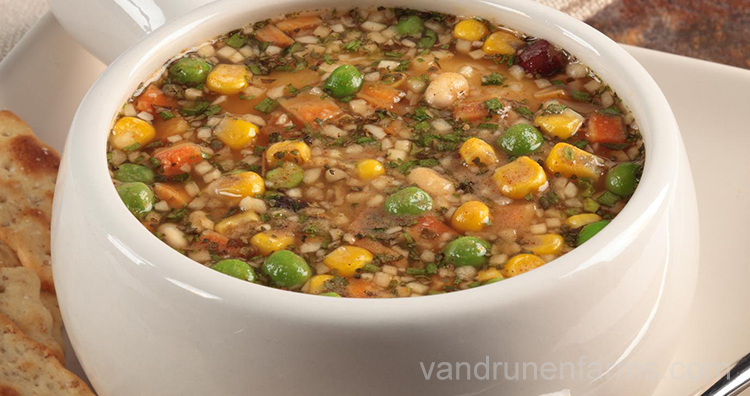When the pandemic began, the ways that we shopped, prepared food, and engaged with food trends quickly evolved for our safety. Since then, new technologies have made it much easier to enjoy restaurant-quality meals and gourmet snacks while dining in. Accelerated technological developments exposed consumers to new channels, choices, and ultra-convenience, which will influence long-term food industry trends.
According to FMCG Gurus, “The pandemic is something that has also significantly influenced the way that consumers shop, with many people opting to switch from brick and mortar stores in favor of online retailers.
In many instances, shoppers have found the experience of shopping online to be more favorable than expected, indicating that they will either not swap back to their original shopping habits or instead, adopt a hybrid model where they combine shopping in physical stores and online.”
So, how will this impact food industry innovation?
It is likely that we will continue to see more consumer demand for innovative retail and foodservice items online — even as restaurants begin to open their doors for full-capacity dining. Mintel reports that: “While the duration and severity of the COVID-19 pandemic remains unpredictable, it is likely that consumers will continue to favor groceries and home meal prep over foodservice.”
Top Dine-in Meal Trends
We have identified key consumer trends that will shape “the new normal” in our industry.
1. FROZEN & SHELF-STABLE FOODS
One of the most notable trends is the newfound consumer reliance on long-lasting food to prevent waste and to minimize time spent on meal preparation. When shopping, consumers are choosing foods with longer storage stability. Frozen food sales have skyrocketed 78.8% in the wake of the pandemic, according to IRI and BCG. Overall, consumers are stocking up their freezers and pantries so they are prepared for a return to busy routines and potential resurgences, simultaneously.
Long storage stability used to mean less nutritious—but now, just because a food is frozen or shelf-stable does not mean consumers expect any lower quality. In fact, as these items become more mainstream, the demand for real, nutritious ingredients grows higher. Consumers expect the same clean label benefits they get from other categories—like ingredients they can pronounce and traceability—in their frozen and shelf-stable options.
Browse our line of freeze-dried, drum-dried, and frozen ingredients.

Freeze-dried vegetables in a finished soup application
2. CONVENIENCE
Even as stay-at-home restrictions are lifted, we expect to see many consumers continuing to rely on convenient food and beverage choices. Prepared meals and snacks from the grocery store are leading applications because they offer convenience without compromise—essential for consumers trying to juggle it all!
According to Mintel, “Short of time to prepare a meal from scratch, consumers will harbor concerns about dining out. This will open the door for prepared meals which offer the convenience of little meal preparation and a cost-effective alternative.”
From meal kits to frozen pizzas to shelf-stable snacks, brands can reach consumers with prepared meals that offer premiumization, such as fire-roasted ingredients, and a more natural, cleaner label.
Read more about our customized solutions that make it easy for you to offer premiumization.

IQF Fire Roasted Corn
3. GLOBALLY INSPIRED FLAVORS
Consumers are hungry for more adventurous flavor experiences! Limited travel opportunities and food experiences have set back today’s consumer’s ability to taste exotic cuisine.
What are their favorite overseas inspirations? According to Mintel, Spanish, Caribbean, and Thai are the top three cuisines consumers would like to see in more packaged and prepared foods. Adding these flavor experiences to easy-to-make applications would allow them access to their favorite foreign cuisines without the expense of restaurant carry-out or risk of kitchen burn-out. Prepared foods have an opportunity to provide the same great restaurant taste with a higher value and more convenience.
Read more about our line of exotic fruit ingredients.
4. DECADENT INDULGENCES
Remember the days of childhood snacking—when you couldn’t get enough of chocolatey, cheesy, and sugary delights? Recently, consumers have begun seeking out the comfort of these familiar and indulgent foods, especially because of their nostalgic appeal. Long term, however, the desire for low-sugar and all-natural ingredients will shape consumers’ preference for decadent snacks and desserts. According to Mintel, when shopping for chocolate or candy, 22% of consumers list all-natural ingredients as an important purchasing factor.
So, how can you develop healthier alternatives that remind consumers of their favorite treats from days past? Achieve indulgent, clean label flavor profiles by using real fruit and vegetable ingredients that add familiarity, texture, sweetness, and piece identity.

Freeze-dried raspberries covered in dark chocolate
Get in touch with us today to learn how we can help you meet the demand of today’s consumers.

